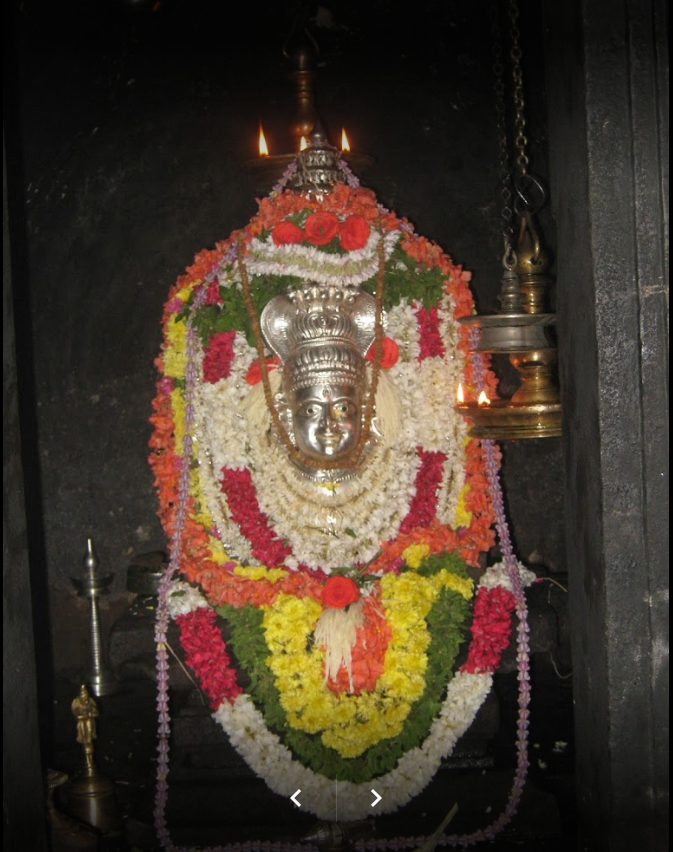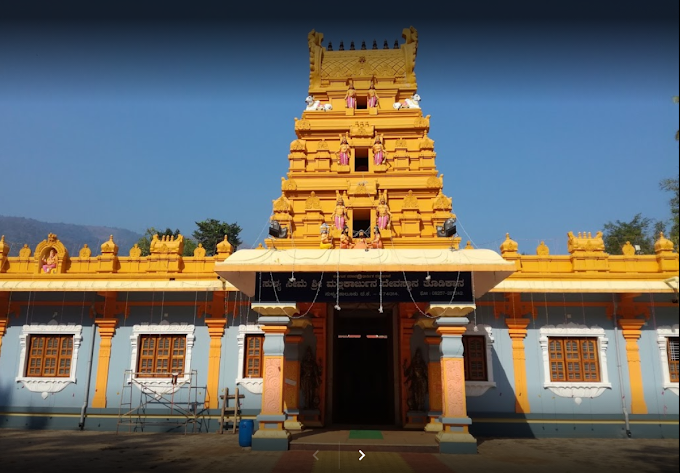Under the Portuguese rule, Portuguese relations with Hindus were not so good, it was during early 19th century Portuguese’s were so patient and co-operate with Hindus here in Bandora, in order to be grateful Hindus built here a temple called “Mahalaxmi” as she is referred to as Goddess of peace.
Hindus describes Mahalaxmi is a form of Mother of all Universes, who raised three super powers Brahma the creator, Vishnu the preserver and Shiva the destroyer. She is worshipped from many ages and by the 8th century many of their ancestor Hindu leaders adopted her. This temple is built in the hollows of valley; the description of this temple goes this way, it has a small arched entrance at the one end with naubat khana placed on the up and further to this is a village. Two sides are kept open, in a miscellany of separate shrine parivar devatas are place displaying in the courtyard, with a simple plastered covering in a red colour. On the entrance of this main building there is a domed octagonal temple tower place with very rare two domes having the look of flattened which is something attractive, the main towers truncated dome is kept higher with huge lantern.
This floor has new hall designed for dance and musical activities keeping in mind with festivals. Every side of mandapa’s entrance is designed with the arts of Hanuman who is known God of Monkey and Garoda Vishnu’s vehicle, half eagle half man and the doors are magnificently carved in wood placed with Ganesh on them.
A dynamic silver arched doorway which takes you from pillared hall to sanctuary, the best part is the creation of twenty four wooden panels painted lightly, thus displaying the pictures of Bhagvata Puran along with the story of Lord Krishna and Vishnu’s eighth incarnation. The actual main temple of Mahalaxmi is situated in Kolhapur one of Maharashtra’s state which is nearly 150 km away from Goa to the north. 4kms. from Ponda. Situated in the village of Bandode.
It is considered the abode of the original Goddess of the Shakti cult. The Sabhamandap has a gallery of 18 images, out of 24 images of emanatory aspects of Bhagvata sect, which is considered one of the few galleries of wooden images of Vishnu in India . The image of Mahalakshmi has a close resemblance to that of Mahalakshmi at Kolhapur , the main centre of worship. Her special feature is that she wears a linga on her head and is considered a peaceful or Satvik form of the Devi. The Goddess Mahalakshmi was worshipped by the Shilahara rulers (750-1030 A. D.) and the early Kadamba Kings of Goa.
ABOUT SHREE MAHALAXMI TEMPLE

Mahalaxmi is the Goddess of power and strength and is believed to be an incarnation of ‘Adishakti’-the supreme form of power and energy. The Shaktas- worshippers of Shakti cult, among the Saraswats, worshipped Adishakti in the form of the linga.
Many accept Mahalaxmi as Pallavi, their supporting deity, who is believed to have been released when the gods and demons were churning the ocean for amrita the nectar of immortality. The Saraswats, at the time of their arrival in Goa , were worshippers of ‘Shiva-Shakti’- Shiva being represented by the ‘Linga’, and Shakti as the Goddess. Thus Shri Mahalaxmi was their Goddess and has been worshipped by the Shilahara rulers (750-1030 A.D.) and also the Kadamba Kings of Goa. This peaceful or Satvika form of devi that shows in the idol at this temple has a unique feature- that she wears linga on her head.
In addition to the black granite stone idol that we can see now, there was also an Utsava idol made of ‘panchloha’ (five metals). It is said that during the Portugese inquisition in 1557, two non-Brahmins, Sapta and Phato, carried the Utsava idol in a box, to save it from the rage of the Portuguese who already had then destroyed the granite idol. Sapta and Phato traveled by boat along the Arabian Sea, crossed the Rasai River and reached Talawal or Durbat in Atrunja, and handed over the Utsava idol to the Bhandiwade Mahalaxmi Temple . As a reward, Satto and Phato were given two balls of rice after the midday mahapuja under the instruction from the goddess to the temple management. This practice is still carried out at a small hut constructed (near the temple) in memory of these two devotees
Dieties
Despite the Portuguese influence that dominated Goa over the centuries, it is fascinating to see how such a large number of Hindu temples have survived here. Uprooted from place to place, the presiding deities were preserved and worshipped, at times, even in the houses of pujaris (priests), till they were ultimately ensconced in their present-day abodes. Some such old temples of Goa, which are noted for their natural beauty and simple architecture, have certain basic features, as in the days of yore, of being surrounded by betel nut trees, coconut groves and lakes of pure water. When you enter any of these temples you are welcomed by the sentinels-the great pillars of light.
Among the oldest temples in Goa are the ones built by the Saraswat Brahmins of Bihar-the Mangeshi Temple of Priol, the Shanta Durga Temple at Kavele, the Ganapati Temple at Khandole, the Mahalaxmi Temple at Bhandiwade and the Sri Nagesh Maharudra Temple at Bandora. Of these, unlike all other ancient deities of Goa, Sri Nagesh Maharudra did not move from Bandora (Bhandiwade) even during the period of the Portuguese inquisition. Most of these temples look relatively new as they have been restored after being destroyed by the Portuguese. That explains why there are no temples around the coast, which was the prime territory of the Portuguese
There hangs many a tale about the origin of each of these temples, most of them revolving around the migration of the Saraswats from the banks of the legendary Saraswati river, on to the Gangetic plains, and then on to Gomantaka on the invitation of the sage Parasurama.
The Saraswat Bhramins generally accept Shri Mahalaxmi as Pallavi, their supporting or protecting deity if they have the following as their kuldevata.
Contact
Adddress : Bandora, Ponda, Goa - India
Phone Number : 91- 832-2335355/2335434
Email : seva@mahalaxmibandora.com















